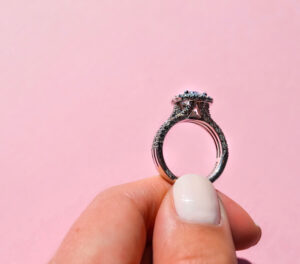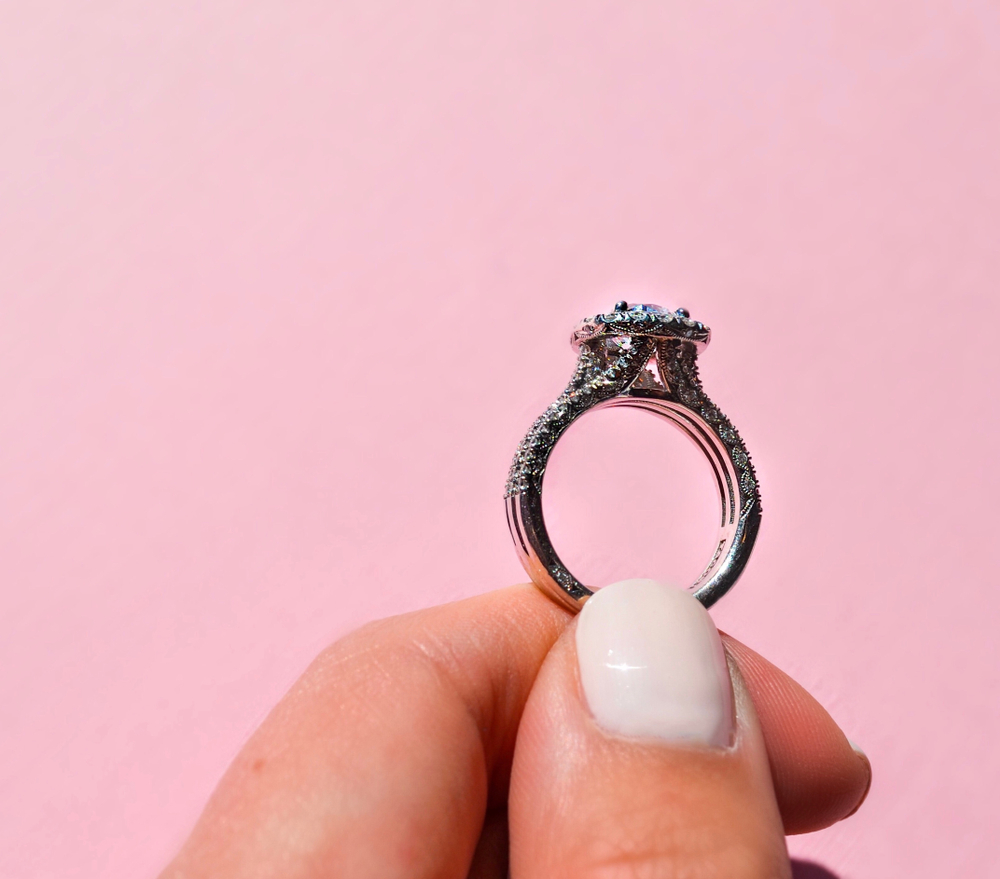
In the grand tapestry of literature, symbols function as vessels of profound meaning, transcending their physical forms to become repositories of emotional depth and cultural significance. Among these symbols, none epitomizes the union of enduring love and material splendor quite like the diamond ring. Beyond its status as a coveted gem, the diamond ring has evolved into a potent literary metaphor, adorning the pages of classic literature with its symbolic resonance. At the heart of the diamond ring’s literary symbolism lies its inherent strength, an attribute mirrored in the indomitable nature of true love. The diamond’s renowned hardness becomes a metaphor for the unyielding commitment between two souls intertwined in the intricate dance of romance. Literature is replete with instances where the durability of the diamond is invoked to signify the resilience required to weather the storms of life. Shakespeare’s immortal words in “Hamlet” capture this sentiment: “Frailty, thy name is woman!” In this context, the diamond ring emerges as a counterpoint to human frailty, an enduring testament to love’s ability to withstand the pressures of time and adversity.
The metaphorical resonance of the diamond ring extends beyond its toughness to encompass the brilliance that emanates from within. Diamonds, with their unmatched sparkle, become symbols of the luminosity inherent in true love. Romantic literature often draws parallels between the dazzling facets of a diamond and the multifaceted nature of love – its passion, its tenderness, its capacity for growth and renewal. In Emily Brontë’s “Wuthering Heights,” the tumultuous love between Catherine Earnshaw and Heathcliff is akin to the flashes of brilliance within a diamond – a love both fierce and enduring, capable of piercing the darkest depths of the soul. In the world of poetic expression, diamond rings take on a symbolic weight that transcends the material realm. The clarity of a diamond becomes a metaphor for the transparency and sincerity required in a loving relationship. Poets, with their lyrical pens, often invoke the image of a diamond to describe the purity of a lover’s intentions. The crystal-clear nature of the gem mirrors the openness and honesty essential in fostering a connection that stands the test of time. As William Wordsworth reflects in his poetic exploration of nature, “Come forth into the light of things, let nature be your Teacher.” The diamond, in this light, becomes nature’s own metaphor for the radiant honesty that should illuminate the path of enduring love.
The tradition of giving a diamond ring as a token of commitment has become a literary motif, a gesture laden with symbolic significance. In F. Scott Fitzgerald’s “The Great Gatsby,” the green light at the end of Daisy Buchanan’s dock, often interpreted as a symbol of unattainable love, can be seen as a metaphorical diamond ring – an ever-present reminder of the enduring love Jay Gatsby harbors for Daisy, a love unbroken despite the passage of time and the gulf that separates them. The act of presenting a diamond ring, both in literature and reality, becomes a ritual infused with meaning. It transcends the material exchange, evolving into a symbol of promise and dedication etched in the language of symbols. The circular shape of the ring, representing eternity, takes on profound significance in literary narratives. In Jane Austen’s “Pride and Prejudice,” the circularity of the engagement ring reflects the cyclical nature of love, suggesting that true affection is a perpetual journey rather than a destination.
In conclusion, the literary symbolism of diamond rings is a testament to the enduring power of love and its ability to transcend the confines of time and circumstance. Through the annals of literature, these precious gems have become more than mere adornments; they are symbols of commitment, resilience, and the everlasting nature of true love. The diamond ring, in the hands of skilled authors and poets, transforms into a metaphorical vessel, carrying the weight of human emotions and immortalizing the beauty of enduring relationships on the pages of literary history.
